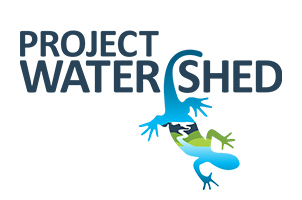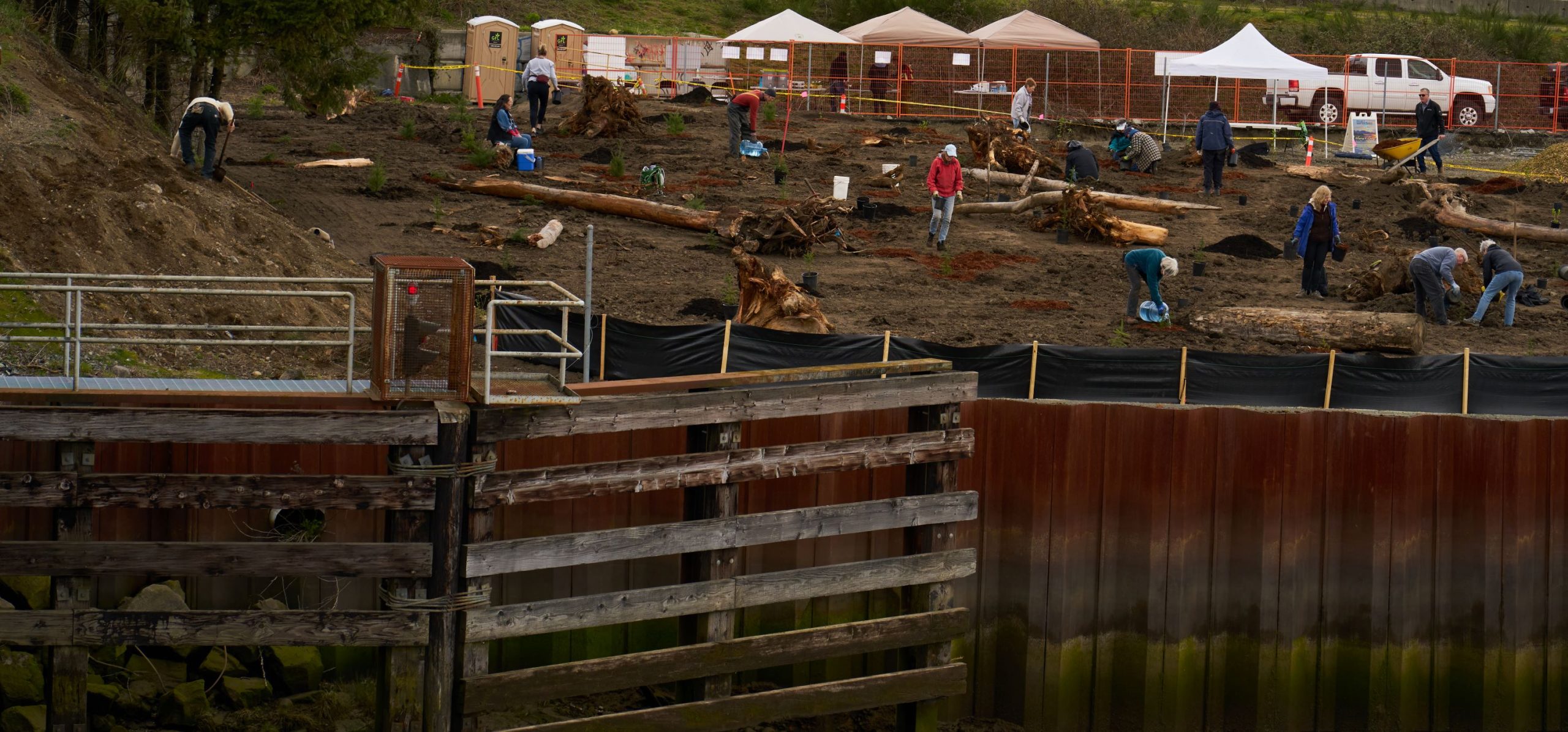Fall Planting at Kus-kus-sum Brings Aid from Near and Far
“A portion of the site is now at the appropriate elevations and is ready for planting” reported Caitlin Pierzchalski, Executive Director for Project Watershed. “We are excited to welcome locals and Ocean Bridge participants onsite to assist with this part of the restoration process”.
Planting days for the community have been set for October 5, 6, 8, 10 and 11 and the Ocean Bridge participants will be planting on October 4. Comox Valley Project Watershed Society has partnered with the Ocean Bridge program of Ocean Wise before with their Forage Fish Project. “Ocean Bridge participants are aspiring young environmental stewards that come from all over Canada and we are happy to host the program participants. They gain experience and we gain enthusiastic hands to support our work,” said Pierzchalski.
All members of the community physically able to navigate rough terrain and engage in planting activities such as digging holes and lifting plants are welcome to volunteer to help plant. There will be a morning shift from 9 am to noon and an afternoon shift from 12:30 pm to 3:30 pm. Each shift is limited to 15 volunteers to ensure that there are enough tools to accommodate everyone. To sign up to volunteer visit projectwatershed.ca/volunteer/
Project Watershed is aiming to plant around 5,000 native streamside species in the prepared area before the weather turns to winter. We will be planting upland and tidal marsh plants such as Sitka spruce, salmonberry and sedges.
This fall about one third of the total number of plants will be planted. This is because only a portion of the site is ready for planting. In the early spring earthworks will continue to prepare the remaining portion of the site for planting. More planting events will occur in the spring as the areas to receive plants are ready.
“While we have raised over 70% of the funds for the restoration process, we still have a way to go” reports Caila Holbrook, Manager of Outreach and Education. “We are still accepting any and all donations to help us raise the remaining funds so that we can complete the restoration.” Donations to the project can be made here.
Related Posts
Mallard Creek Restoration Update for 2024
Restoration work in Mallard Creek will continue this year, including invasive removal, restoring connectivity, and trial planting of a new riparian species. Volunteer events starting in September 2024.
Volunteer at Kus-kus-sum Chamber of Commerce Event
We are showing Kus-kus-sum off to businesses in the Valley through a Chamber Business to Business event. We are looking for a few volunteers to assist with this event.
Coastal Plant Monitoring
Get involved with our new vegetation community science monitoring program!
Spring Field Trips
Throughout May and June Project Watershed will be taking elementary school classes out on field trips to learn about estuary and coastal ecology and to assist with planting and plant maintenance.
Working Together to Identify Forage Fish Spawning Beaches
This year marks the 5th year of a partnership between Comox Valley Project Watershed Society and North Island College on a long-term study to examine intertidal spawning habitats of forage fish in the northern Salish Sea.
Glen Urquhart Update – Spring 2024
Latest news from Glen Urquhart restoration progress for spring 2024.



